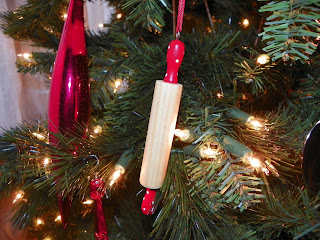O
Christmas Tree! O Christmas Tree!
Thy leaves are so unchanging;
O
Christmas Tree! O Christmas Tree!
Thy leaves are so unchanging;
Not only
green when summer's here,
But also when 'tis cold and drear.
O Christmas
Tree! O Christmas Tree!
Thy leaves are so unchanging!
The History of the Christmas Tree is very interesting, especially to me being of German decent and growing up in Pennsylvania/ The German-American sect used apples, nuts, and marzipan cookies. Popcorn joined in after being dyed bright colors and interlaced with berries and nuts.. In this blog I will share my findings on how we came to put a tree in our houses every December, decorate it, and admire it for a month or so, the toss it out. As well I add my own spin to the tradition by decorating my tree in culinarian fashion, so enjoy the photos below.
How It All Got Started via HISTORY.COM
Long before the advent of Christianity, plants and trees that remained green all year had a special meaning for people in the winter. Just as people today decorate their homes during the festive season with pine, spruce, and fir trees, ancient peoples hung evergreen boughs over their doors and windows. In many countries it was believed that evergreens would keep away witches, ghosts, evil spirits, and illness.
In the Northern hemisphere, the shortest day and longest night of the year falls on December 21 or December 22 and is called the winter solstice. Many ancient people believed that the sun was a god and that winter came every year because the sun god had become sick and weak. They celebrated the solstice because it meant that at last the sun god would begin to get well. Evergreen boughs reminded them of all the green plants that would grow again when the sun god was strong and summer would return.
The Romans knew that the solstice meant that soon farms and orchards would be green and fruitful. To mark the occasion, they decorated their homes and temples with evergreen boughs. In Northern Europe the mysterious Druids, the priests of the ancient Celts, also decorated their temples with evergreen boughs as a symbol of everlasting life. The fierce Vikings in Scandinavia thought that evergreens were the special plant of the sun god, Balder.
Germany is credited with starting the Christmas tree tradition as we now know it in the 16th century when devout Christians brought decorated trees into their homes. Some built Christmas pyramids of wood and decorated them with evergreens and candles if wood was scarce. It is a widely held belief that Martin Luther, the 16th-century Protestant reformer, first added lighted candles to a tree. Walking toward his home one winter evening, composing a sermon, he was awed by the brilliance of stars twinkling amidst evergreens. To recapture the scene for his family, he erected a tree in the main room and wired its branches with lighted candles.
Most 19th-century Americans found Christmas trees an oddity. The first record of one being on display was in the 1830s by the German settlers of Pennsylvania, although trees had been a tradition in many German homes much earlier. The Pennsylvania German settlements had community trees as early as 1747. But, as late as the 1840s Christmas trees were seen as pagan symbols and not accepted by most Americans. To Read The Complete Article, Click Here
Here are Culinary Christmas Tree for your enjoyment: MERRY CHRISTMAS
No matter you religious beliefs, or what holidays you celebrate--Happy Holidays, Enjoy the Winter Solstice.
Eat Well, Live Life, Be Safe, yours truly, THE NOMADIC CHEF, DOUGLAS STUCHEL
































































No comments:
Post a Comment